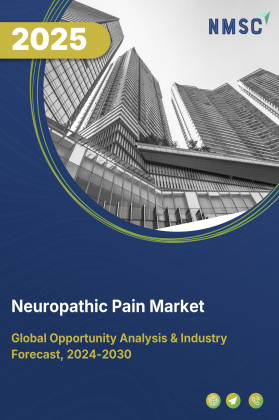
Primary Care Market by Primary Care Services (Preventive Care, Diagnosis, Management of Chronic Diseases, Treatment of Acute Illness, and Others), by Service Provider (Independent, Institutions, Payer-Owned Primary Care Providers, Retailers, and Ancillary Providers), by Revenue Models (Fee-for-Service, and others), and by Patient Demographics (Pediatrics, and others), and by Mode of Consultation – Global Opportunity Analysis and Industry Forecast 2024-2030
The Primary Care Market Overview
The global Primary Care Market size was valued at USD XXX billion in 2024 and is predicted to reach USD XXX billion by 2030 with a CAGR of from 2025-2030.
The primary care market is surging significantly due to factors such as increasing prevalence of chronic diseases, rise in aging population across the world, and integration of AI tools in primary care services. However, the cost high costs associated with advanced healthcare technologies and infrastructure hinders market expansion.
Conversely, Patient-centered medical homes together with accountable care organizations present substantial opportunities when integrated care techniques are applied. The market key players United HealthCare Services, Inc., CVS Health, Cardinal Health and others choose different developmental strategies to preserve their market control.
Market Dynamics and Trends
Increasing Prevalence of Chronic Diseases Driving Primary Care Industry Growth
The increasing burden of chronic diseases is the driving force behind the primary care services demand as patients require continuous monitoring and management.
For instance, in 2023 diabetes cases worldwide will increase from 529 million to 1.3 billion by 2050, and more than half a billion people live with diabetes globally, cutting across all ages, men, women, and children in every country. Such an increase in the number of chronic diseases raise the demand for comprehensive and accessible care in managing these diseases for improved outcomes in health.
Rising Geriatric Population Boosting the Primary Care Market Demand
The increasing geriatric population is driving the growth of the primary healthcare market as older individuals require frequent health check-ups, chronic disease management, and primary care diagnostics.
According to the World in Data report of 2024, at present there are around 830 million people aged 65 and older in the world and it is projected to rise to 1.7 billion by 2054. This defines a positive demographic change, coupled with a growing demand for sophisticated, adequate healthcare solutions since primary healthcare plays an extensive role in managing chronic conditions and health promotion among individuals.
AI Integration Enhancing Primary Care Market Growth
The integration of AI tools in primary care is driving market growth by enhancing operational efficiency and reducing administrative burdens. These innovations improve workflow management, allowing healthcare providers to focus on patient care.
For example, in October 2024 a new set of AI tools was launched by Amazon One Medical services for enhancing primary care efficiency. The technologies enhance office operations by improving workflow controls so healthcare providers dedicate more time to patient care activities.
This method improves healthcare service delivery by making services more accessible and efficient which drives the advancement of primary care system growth and effectiveness.
High Costs of Healthcare Technologies and Infrastructure Restraints Market Growth
Advanced healthcare technologies and infrastructure along with their high costs restrict the primary care market expansion. Advanced healthcare tools together with required infrastructure become a financial challenge for both small healthcare providers and establishments in impoverished regions. The expense of healthcare technologies and infrastructure reduces the implementation of new solutions that impairs primary care service development.
Integrated Care Models Create Future Opportunities
The adoption of integrated care models, such as patient-centered medical homes (PCMHs) and accountable care organizations (ACOs), creates future growth opportunities in the primary care market. These models enhance care coordination by encouraging collaboration among various healthcare professionals, leading to improved health outcomes and higher quality healthcare services for patients.
Market Segmentations and Scope of the Study
The primary healthcare market report is segmented on the basis of primary care services, service providers, revenue models, patient demographics, and mode of consultation. On the basis of primary care services, the market is divided into preventive care, diagnosis, management of chronic diseases, treatment of acute illness, and others. On the basis of service provider, the market is classified into independent, institutions, payer-owned primary care providers, retailers and ancillary providers. Based on revenue models, the market is bifurcated into Fee-for-Service and Fee-for-Value/Value-Based Care (VBC). Based on patient demographics, the market is categorized into pediatrics, adults, and geriatrics. On the basis of mode of consultation, the market is segmented into in-person medical care and digital and virtual healthcare services.
Geographical Landscape
North America Dominates the Primary Care Market Share
In North America, government initiatives are propelling primary care market growth by improving healthcare infrastructure, supporting research, and fostering innovation. For instance, in June 2024, the National Institutes of Health (NIH) launched a USD 30 million pilot program to test the feasibility of a national primary care research network.
This initiative aims to integrate diverse data sources, improve patient outcomes, and reduce healthcare disparities, driving the advancement of primary care services and innovation across the region.
Also, the primary care sector experiences continuous progress due to new care delivery systems that provide better patient service and boost medical service efficiency. The models concentrate on optimizing health care processes while minimizing treatment delays and offering adaptable care options to patients. Cleveland Clinic introduced their new primary care access model to Florida patients in January 2025 to deliver prompter health services.
Enhanced care delivery resulted from this model because it optimized efficiency along with flexibility to deliver appointments timelier and more accessible. Healthcare models will develop further to fuel market expansion by developing more accessible and efficient medical services.
Asia-Pacific to Witness Steady Growth in the Market
The primary healthcare market rises due to the increasing number of elderly people across the Asia-Pacific region. The aging demographic trends result in increased service demands for healthcare specifically for chronic disease management and age-related medical care.
Statistics from China in 2023 indicate that about 21.1% of its citizens are aged sixty and above with total numbers exceeding 297 million. The growing elderly population controls market growth in this region because it emphasizes the requirement for accessible specialized primary care services which will optimize health results among seniors.
Also, the growing number of chronic diseases prevailing across the Asia-Pacific area fuels the primary care market expansion at a significant rate. Primary care services continue to grow because heart diseases together with diabetes and cancer prevalence increases resulting in greater need for preventive and early diagnostic healthcare.
Recent data from IDF Diabetes Atlas reveals that India had 74.2 million adults with diabetes in 2021 whereas projections show the number can reach 124.9 million people by 2045 representing a growth of 68% above 2021 estimates. The increasing number of chronic diseases in the region emphasizes the critical necessity of improving both primary care facilities and services.
Competitive Landscape
The primary care industry comprises of various key players such as United UnitedHealthcare (Optum), CVS Health, Walgreens Boots Alliance (VillageMD), Amazon (One Medical), Kaiser Permanente, Humana (CenterWell Primary Care), Teladoc Health, American Well (Amwell), Aledade, Cityblock Health, ChenMed, Oak Street Health (now CVS), Devoted Health, Duly Health and Care, CommonSpirit Health, and others. These market players are adopting strategy such as business expansion, partnership to remain dominant in the market.
For example,UnitedHealthcare expanded its primary care services at MinuteClinics in Aug 2025,Optum launched an AI Marketplace to connect healthcare providers with innovative technology solutions. The UnitedHealth agreed to divest 164 hospice and home health locations to resolve antitrust issues tied to an acquisition.
Also, in Sep 2025, Walgreens Boots Alliance together with VillageMD,it Began reducing its commitment to primary care, exploring divestiture of VillageMD assets.VillageMD sold 32 clinics to a Texas startup.
Key Benefits
-
The report provides quantitative analysis and estimations of the primary care market from 2025 to 2030, which assists in identifying the prevailing market opportunities.
-
The study comprises a deep dive analysis of the current and future primary care market trends to depict prevalent investment pockets in the market.
-
Information related to key drivers, restraints, and opportunities and their impact on the primary care market is provided in the report.
-
Competitive analysis of the players, along with their market share is provided in the report.
-
SWOT analysis and Porters Five Forces model is elaborated in the study.
-
Value chain analysis in the market study provides a clear picture of roles of stakeholders.
Primary Care Market Key Segments
By Provider Type
-
Independent Practices
-
Hospital/Health System PCPs
-
Large Physician Groups
-
Value-Based Networks
-
Direct/Concierge Care
-
Retail Clinics
-
Payer-Owned Clinics
-
Employer Clinics
-
Virtual-First PCPs
-
Community Clinics
By Clinical Offering
-
Preventive Care
-
Acute Care
-
Chronic Care
-
Behavioral Health
-
Women’s & Pediatrics
-
Diagnostics & Labs
-
Care Coordination
-
Other Services
By Payment Model
-
Fee-for-Service
-
Value-Based / Capitation
-
Direct Patient Subscription
-
Employer-Direct Contracting
By Mode of Consultation
-
In-Person
-
Virtual
-
Hybrid
By Patient Demographics (Age)
-
Pediatrics (0-18)
-
Adults (19-64)
-
Geriatrics (65+)
Key Players
-
UnitedHealthcare (Optum)
-
CVS Health
-
Walgreens Boots Alliance (VillageMD)
-
Amazon (One Medical)
-
Kaiser Permanente
-
Humana (CenterWell Primary Care)
-
Teladoc Health
-
American Well (Amwell)
-
Aledade
-
Cityblock Health
-
ChenMed
-
Oak Street Health (now CVS)
-
Devoted Health
-
Duly Health and Care
-
CommonSpirit Health
REPORT SCOPE AND SEGMENTATION:
|
Parameters |
Details |
|
Market Size in 2024 |
USD XXX Billion |
|
Revenue Forecast in 2030 |
USD XXX Billion |
|
Growth Rate |
CAGR of XY% from 2025 to 2030 |
|
Analysis Period |
2024–2030 |
|
Base Year Considered |
2024 |
|
Forecast Period |
2025–2030 |
|
Market Size Estimation |
Billion (USD) |
|
Growth Factors |
|
|
Companies Profiled |
15 |
|
Market Share |
Available for 15 companies |
|
Customization Scope |
Free customization (equivalent up to 80 working hours of analysts) after purchase. Addition or alteration to country, regional, and segment scope. |
|
Pricing and Purchase Options |
Avail customized purchase options to meet your exact research needs. |

















 Speak to Our Analyst
Speak to Our Analyst

























